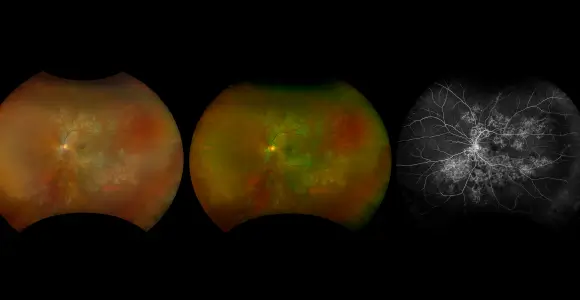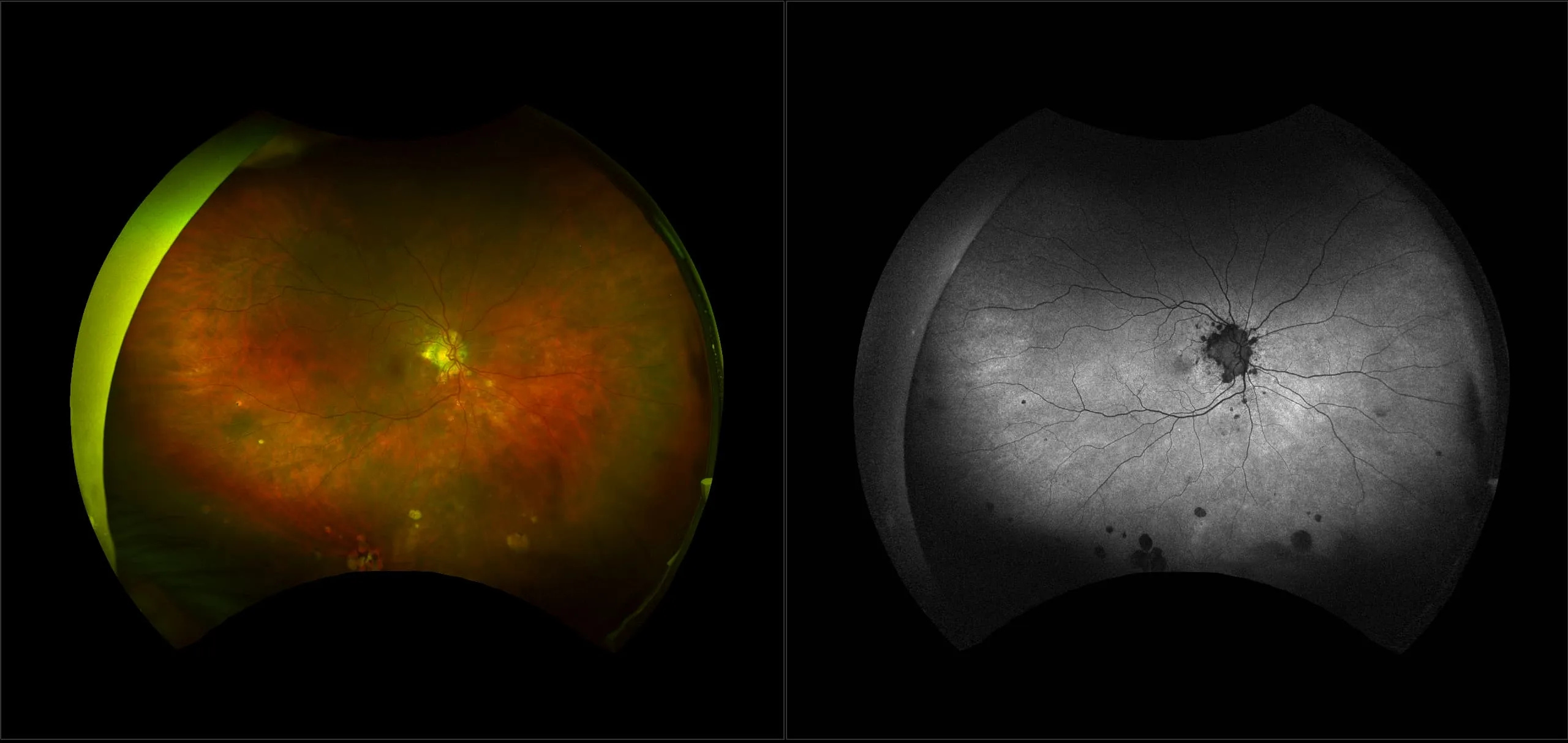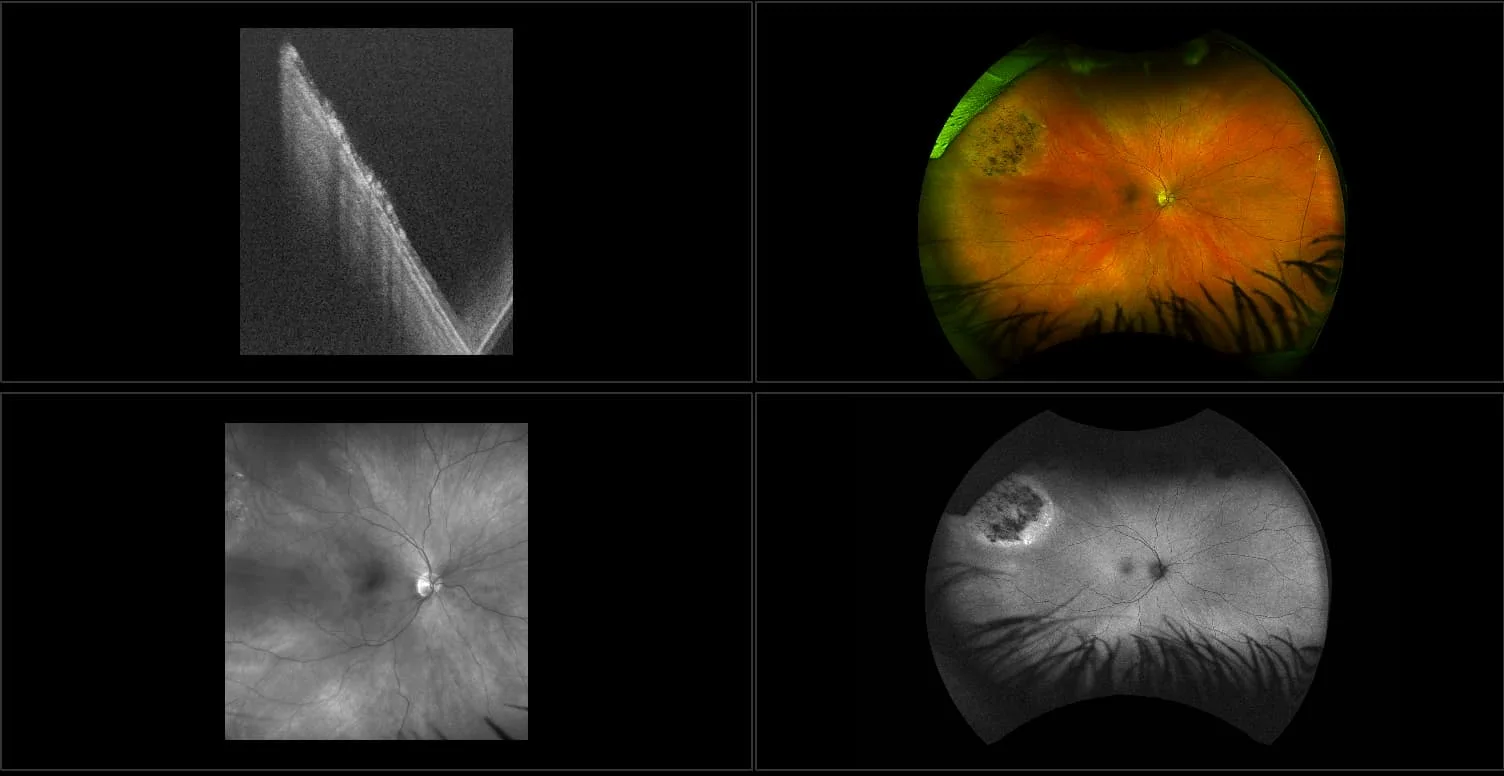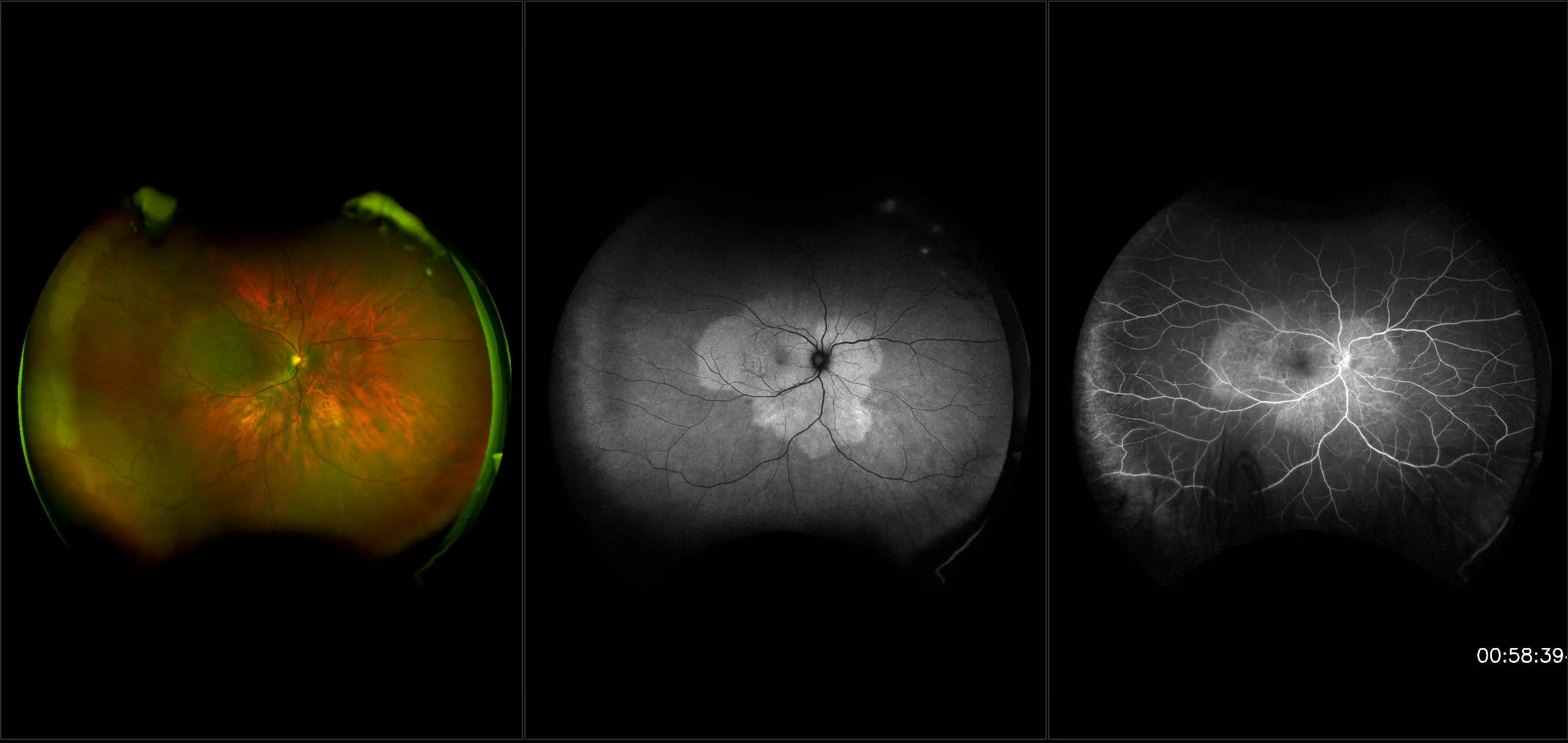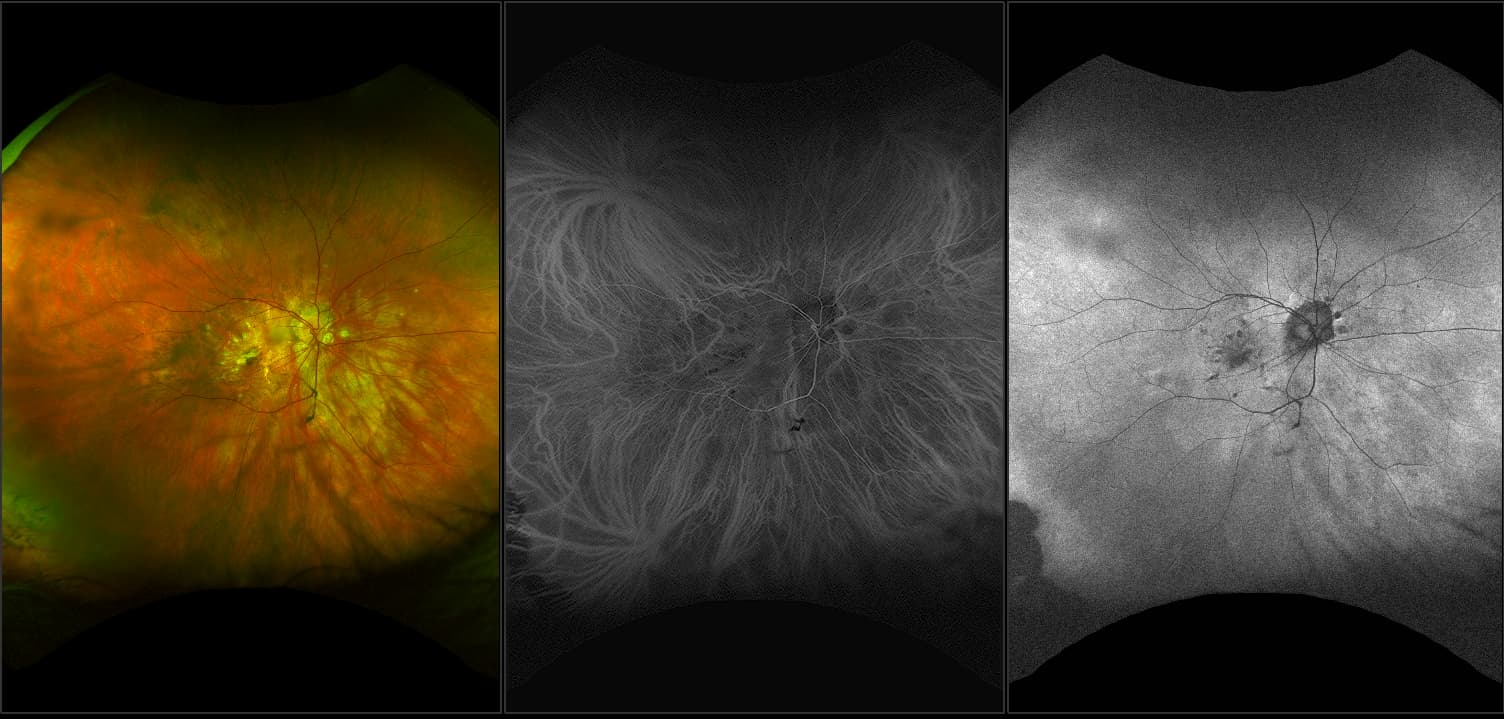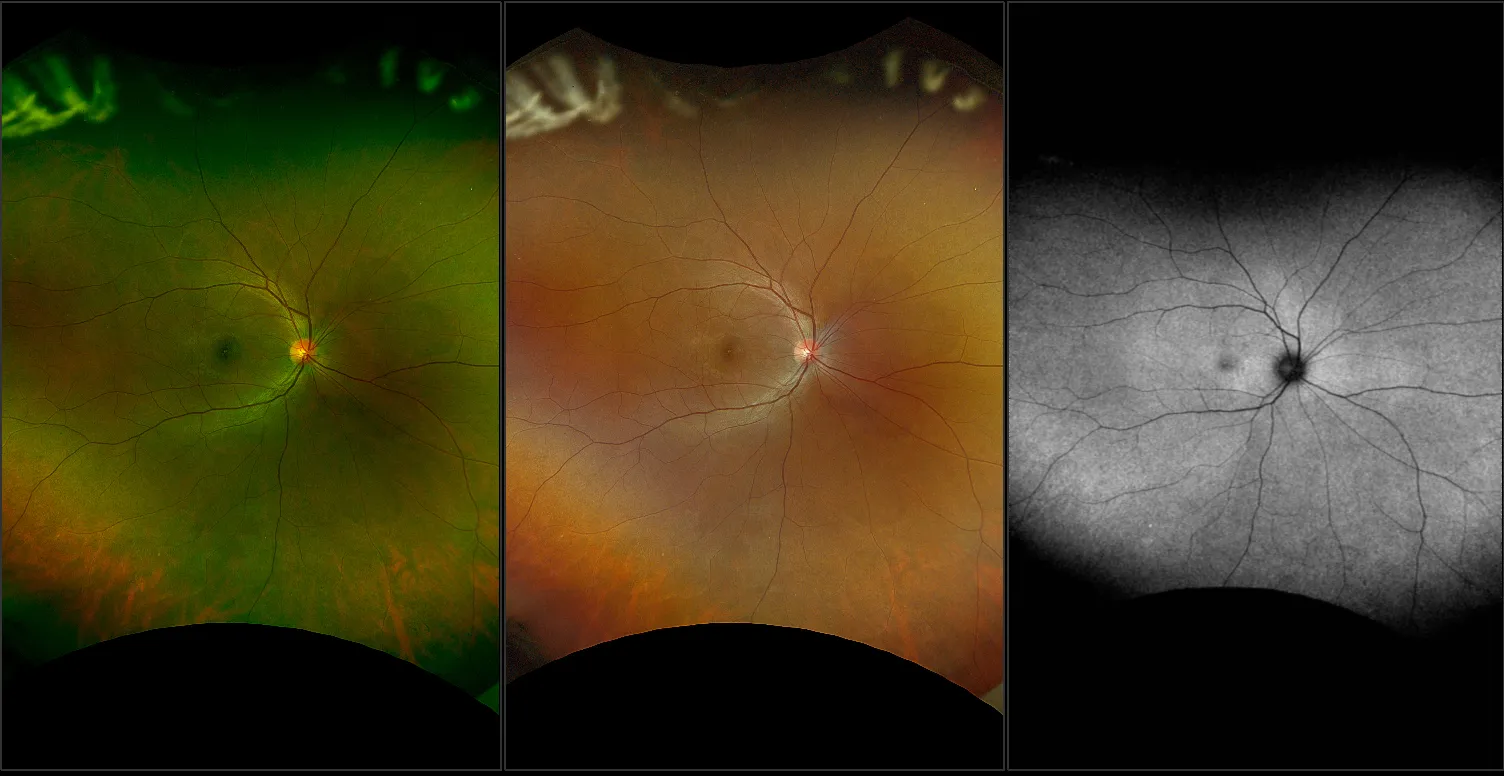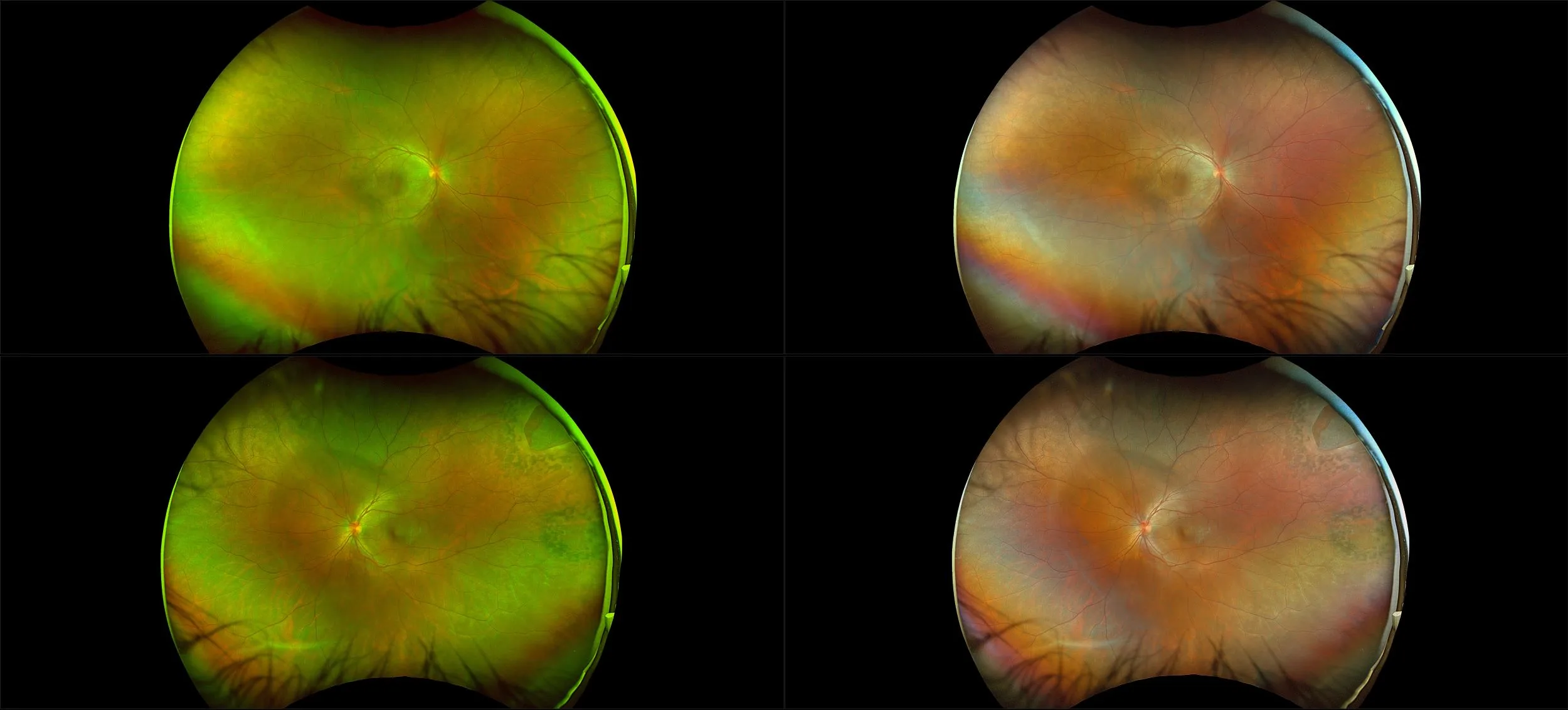Uveitis
Uveitis is inflammation of the uveal tract which can be caused by autoimmune disorders such as rheumatoid arthritis or infection which can be idiopathic. The uvea is responsible for the transport of blood including inflammatory cells and is critical for vision. It can occur at any age and can result from many causes including systemic disease. Uveitis can be categorized as anterior, intermediate and posterior. Posterior uveitis can cause damage to the optic nerve, abnormally high pressure in the eye, cataracts or an accumulation of fluid within the retina which may cause retinal detachment. The clinical studies and articles below can assist in the identification of uveitis using Optos technology and further validate the use of 200 degree, single-capture optomap ultra-widefield retinal imaging for the detection, management and treatment of Uveitic eye disease.
Clinical Studies
optomap Redefines Standard of Care for Inflammatory Disease
Patient management changed because of effective capture inflammatory and infectious disease.
Utility of Oral Fluorescein Angiography with Ultra-wide-field Imaging System for Evaluation of Various Retinal Disorders.
optomap Multimodal Uveitic Disease Cases
Optos offers multimodal imaging with all ultra-widefield devices. Having both ultra-widefield and four images captured in less than one second has been shown to enhance pathology detection and disease management as well as improve practice and clinic flow. Ultra-widefield multimodal imaging is important across all access points of patient care - screening, detection, diagnosis, and treatment.
